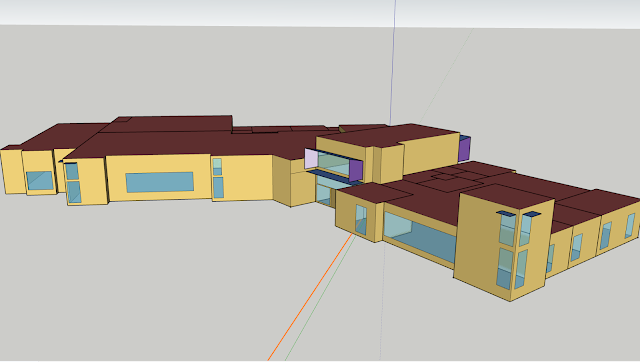Energizing Efficiency: Exploring Innovations in Building Energy Simulation Software
In the realm of sustainable architecture and urban planning, Building Energy Simulation Software (BESS) plays a pivotal role in optimizing energy efficiency and reducing environmental impact. These innovative software solutions empower architects, engineers, and developers to simulate and analyze the energy performance of buildings, facilitating informed decision-making throughout the design and construction phases. Let's delve into the world of BESS and explore the latest innovations driving efficiency in building design.
Understanding Building Energy Simulation Software: A Primer
Building Energy Simulation Software (BESS) encompasses a diverse range of computational tools and algorithms designed to model and simulate the energy consumption, thermal behavior, and environmental impact of buildings. By inputting various parameters such as building geometry, materials, occupancy patterns, and climate data, these software applications generate detailed insights into the energy performance of a building under different scenarios.
Advancements Driving Innovation in BESS
The landscape of Building Energy Simulation Software is continually evolving, driven by advancements in technology and the growing emphasis on sustainable building practices. One notable trend is the integration of artificial intelligence and machine learning algorithms into BESS platforms, enabling more accurate predictions and optimization of energy usage. These advanced algorithms analyze vast datasets to identify patterns and trends, allowing designers to fine-tune building designs for maximum efficiency.
Furthermore, the emergence of cloud-based BESS solutions is democratizing access to energy simulation tools, making them more accessible to architects, engineers, and building professionals worldwide. Cloud-based platforms offer scalability, collaboration features, and real-time performance monitoring, empowering users to streamline the design process and iterate on energy-efficient solutions more efficiently.
Benefits of Building Energy Simulation Software
The adoption of Building Energy Simulation Software offers a myriad of benefits for stakeholders involved in the building design and construction process. Firstly, BESS enables designers to evaluate the energy performance of different design alternatives early in the conceptual phase, allowing for informed decision-making and optimization of building performance. By identifying energy-saving opportunities upfront, designers can minimize the need for costly retrofits and enhance the long-term sustainability of buildings.
Moreover, Building Energy Simulation Software facilitates compliance with energy codes and green building certifications by providing quantitative data to demonstrate compliance with performance standards. This not only enhances the marketability of buildings but also ensures that they meet the evolving expectations for environmental responsibility and energy efficiency.
Challenges and Considerations
Despite the numerous benefits, the adoption of Building Energy Simulation Software is not without its challenges. One common challenge is the complexity of simulation models and the need for specialized expertise to interpret results accurately. Designers and engineers must possess a thorough understanding of simulation techniques and building physics to effectively utilize BESS and derive meaningful insights from simulations.
Additionally, the availability and quality of input data, such as weather data and building material properties, can significantly impact the accuracy of simulation results. Ensuring data integrity and reliability requires careful validation and calibration of simulation models against real-world performance data, which can be time-consuming and resource-intensive.
Driving Toward Sustainability
Looking ahead, the future of Building Energy Simulation Software is promising, with continued advancements driving innovation and sustainability in the built environment. As the demand for energy-efficient buildings continues to grow, BESS will play an increasingly integral role in shaping the design and construction practices of the future. By leveraging cutting-edge technology, fostering interdisciplinary collaboration, and addressing challenges related to data quality and model complexity, stakeholders can unlock the full potential of BESS to create buildings that are not only energy-efficient but also resilient, comfortable, and environmentally responsible.



Comments
Post a Comment